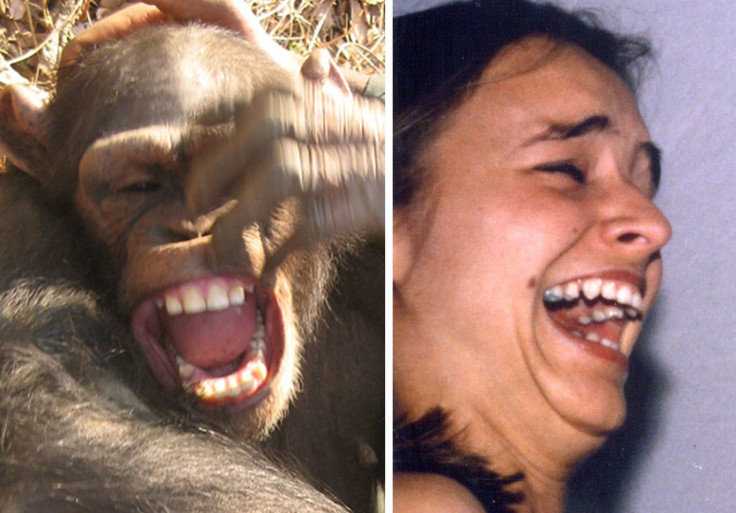Chimps and humans smile the same proving ancestral links

Not only can chimps cook, it turns out now that the apes communicate much like humans, further proving the close evolutionary ties between the two species.
University of Portsmouth researchers analysed the way chimpanzees laugh and smile to conclude that they are similar to humans and probably both smile types evolved from expressions of ancestral apes.
The research also found that chimpanzees are able to produce silent smiles without the accompanying laughing sound, much like humans.
Lead researcher, Dr Marina Davila-Ross, from the University's Centre for Comparative and Evolutionary Psychology and colleagues studied the facial expressions of primates by filming 46 chimpanzees at the Chimfunshi Wildlife Orphanage.
They then used ChimpFACS - a facial action coding system designed for chimpanzees - to measure their facial movements.
Dr Davila-Ross said: "Humans have the flexibility to show their smile with and without talking or laughing. This ability to flexibly use our facial expressions allows us to communicate in more explicit and versatile ways, but until now we didn't know chimps could also flexibly produce facial expressions free from their vocalizations."
The study investigated specific types of smiles that accompany laugh sounds in the chimps and found them matching similar smile types in humans.
The findings suggest that these smile types must have evolved from positive expressions of ancestral apes.
Co-author on the paper, Professor Kim Bard, who designed ChimpFACS, said: "The coding system allows us to examine very subtle facial movements and compare human and chimpanzee facial expressions, based on their shared musculature."
The study further suggests that flexibility in facial expressions was already present in ancestral apes and emerged long before humans evolved.
Key differences include crow's feet displayed in humans during Duchenne laughter but rarely seen in chimps.
Estimates of genetic similarity between humans and chimpanzees based on comparison of both genomes have revealed a 96% match with a difference of 4%.
While this is lower than the earlier 99.4% suggested when the whole ape genome hadn't been sequenced, the fact remains that humans, chimpanzees and bonobos are more closely related on the genetic front to each other than either is to the gorilla or other primates.
DNA also shows that humans and chimps diverged from a common ancestor between 8 and 6 million years ago, where the common ancestor of apes and other primates goes back to 25 million years.
© Copyright IBTimes 2025. All rights reserved.





















